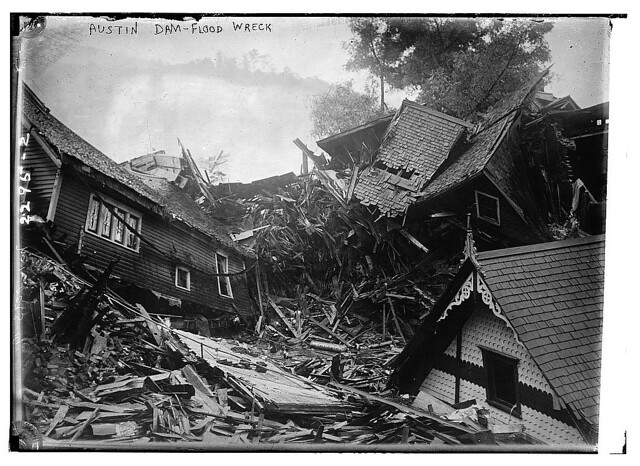Mercalli

While sorting through city documents at the Carlsbad Dove Library, where I volunteer/intern, I came across the city multi-hazard basic emergency plan. It's essentially a collection of checklists for city officials for when floods, fires, earthquakes, or nuclear disasters happen. What I found most interesting was the "Modified Mercalli Intensity Scale" (wiki), a less scientific approach to earthquakes than the Richter scale. It's strangely poetic. There's a narrative in its terse descriptions of disaster aftermath. Sample:
V
Felt outdoors; direction estimated. Sleepers waken. Liquids disturbed, some spilled. Small unstable objects displaced or upset. Doors swing, close, open. Shutters and pictures move. Pendulum clocks stop, start, change rate.
Read through the whole thing after the jump.
Modified Mercalli Intensity Scale
I
Not felt. Marginal and long-period effects of large earthquakes.II
Felt by persons at rest, on upper floors, or favorably placed.III
Felt indoors. Hanging objects swing. Vibration like passing of light trucks. Duration estimated. May not be recognized as an earthquake.IV
Hanging objects swing. Vibration like passing of heavy trucks; or sensation of a jolt like a heavy ball striking the walls. Standing motor cars rock. Windows, dishes, doors rattle. Glasses clink. Crockery clashes. In the upper range of IV, wooden walls and frames creak.V
Felt outdoors; direction estimated. Sleepers waken. Liquids disturbed, some spilled. Small unstable objects displaced or upset. Doors swing, close, open. Shutters and pictures move. Pendulum clocks stop, start, change rate.VI
Felt by all. Many frightened and run outdoors. Persons walk unsteadily. Windows, dishes, glassware broken. Knickknacks, books, etc., off shelves. Pictures off walls. Furniture moved or overturned. Weak plaster and masonry D cracked. Small bells ring (church, school). Trees, bushes shaken (visibly or heard to rustle).VII
Difficult to stand. Noticed by drivers of motor cars. Hanging objects quiver. Furniture broken. Damage to masonry D, including cracks. Weak chimneys broken at tile roof line. Fall of plaster, loose bricks, stones, tiles, cornices (also unbraced parapets and architectural ornaments). Some cracks in masonry C. Waves on ponds; water turbid with mud. Small slides and caving in along sand or gravel banks. Large bells ring. Concrete irrigation ditches damaged.VIII
Steering of motor vehicles affected. Damage to masonry C; partial collapse. Some damage to masonry B; not to masonry A. Fall of stucco and some masonry walls. Twisting, fall of chimneys, factory stacks, monuments, towers, elevated tanks. Frame houses moved on foundations if not bolted down; loose panel walls thrown out. Decayed piling broken off. Branches broken from trees. Changes in flow or temperature of springs and wells. Cracks in wet ground and on steep slopes.IX
General panic. Masonry D destroyed; masonry C heavily damaged, sometimes with complete collapse; masonry B seriously damaged. General damage to foundations. Frame structures, if not bolted, shifted off foundations. Frames cracked. Serious damage to reservoirs. Underground pipes broken. Conspicuous cracks in ground. In elevated areas, sand and mud ejected, earthquake foundations, sand craters.X
Most masonry and frame structures destroyed with their foundations. Some well-built wooden structures and bridges destroyed. Serious damage to dams, dikes, embankments. Large landslides. Water thrown on banks of canals, rivers, lakes, etc. Sand and mud shifted horizontally on beaches and flat land. Rails bend slightly.XI
Rails bend greatly. Underground pipelines completely out of service.XII
Damage nearly total. Large rock masses displaced. Lines of sight and level distorted. Objects thrown in air.
It's also eerie how no human activity is mentioned after IX's "general panic."